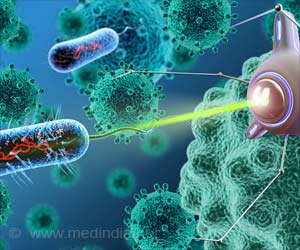To understand the mechanisms behind this reduced motility in old stem cells, the researchers compared the wound healing and proliferative ability of skin stem cells derived from young mice (12 weeks old) and aged mice (19-25 months old). The experiments showed that a specific molecule, called EGFR (Epidermal Growth Factor Receptor), drives skin stem cell motility and that EGFR signalling is reduced in old stem cells. EGFR acts by preventing the degradation of a specific type of collagen, COL17A1, which is necessary to hold the layers of the skin together.
Interestingly, COL17A1 coordinates the movement of skin stem cells towards the injury by regulating actin and keratin filament networks in the cells. The researchers found that with age, a decrease in EGFR signalling occurs, leading to lower levels of COL17A1 and skin stem cells with reduced mobility that are less able to re-epithelialize the skin.
With advanced age, a reduced skin wound healing ability is associated with the development of so-called chronic nonhealing disorders, such as diabetic ulcers and pressure sores. “Although further investigations are still required, stabilizing COL17A1 by regulating its proteolysis is a promising therapeutic approach for improving the decline in skin regeneration observed with age that often leads to serious issues such as ulcers”, says Emi Nishimura, senior author on the study. This research sheds further light on the mechanisms underlying wound healing and may lead to the development of new therapeutic treatments to improve skin regenerative capacity.
Source: Eurekalert



